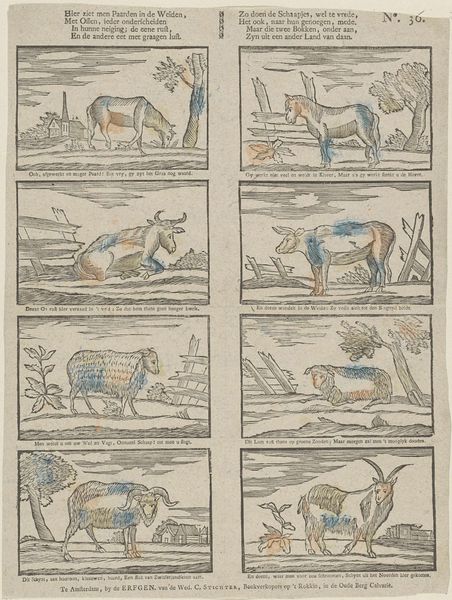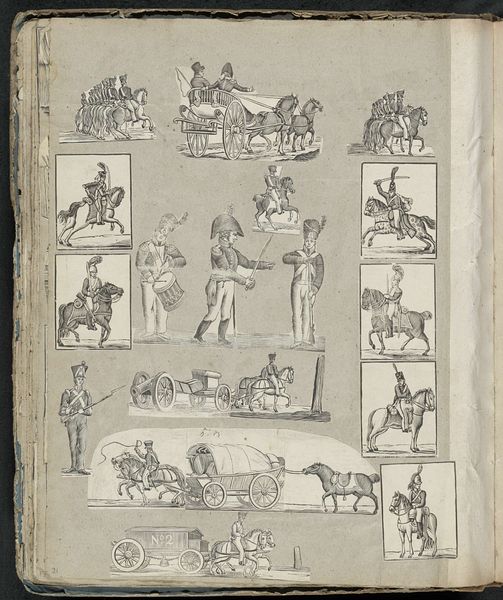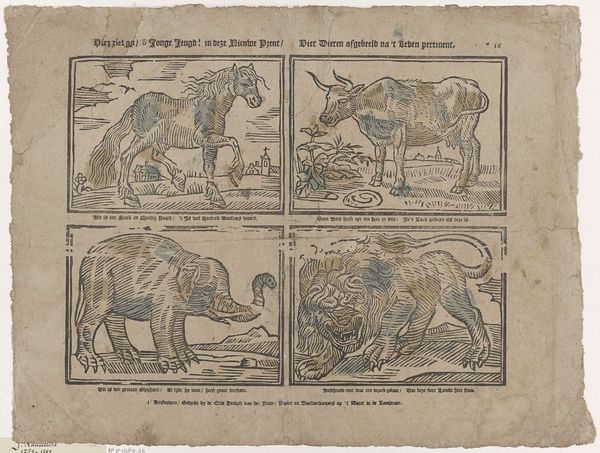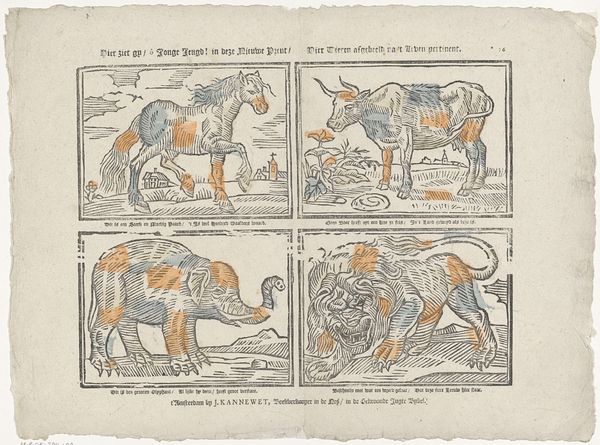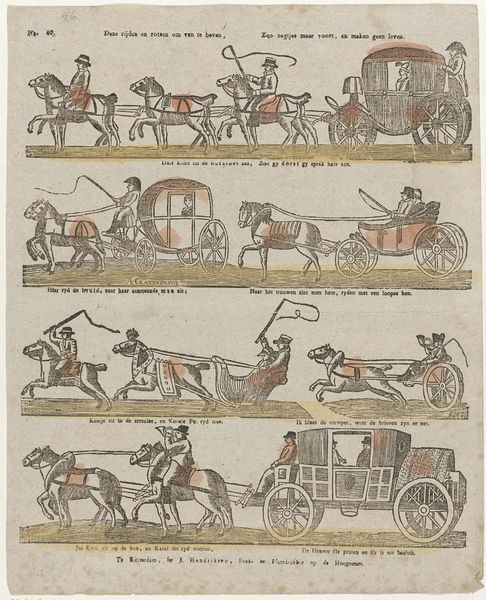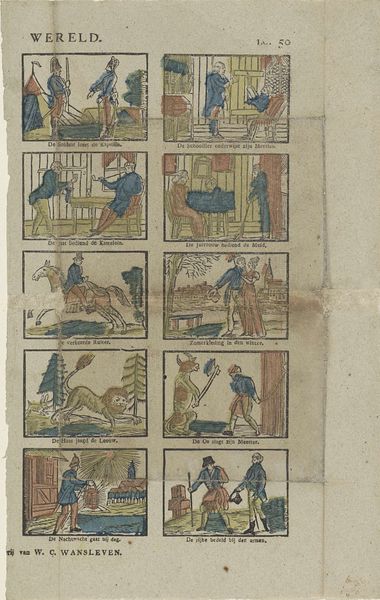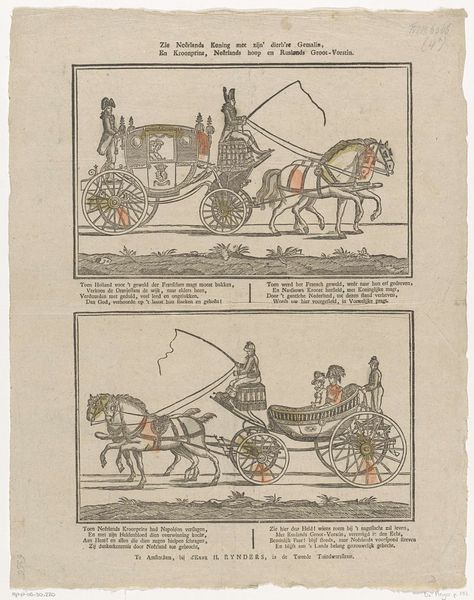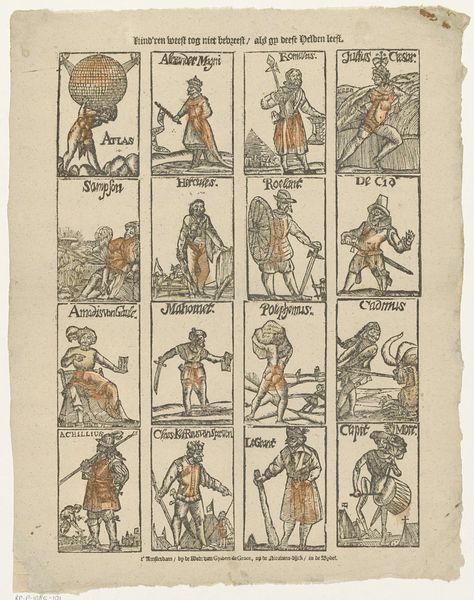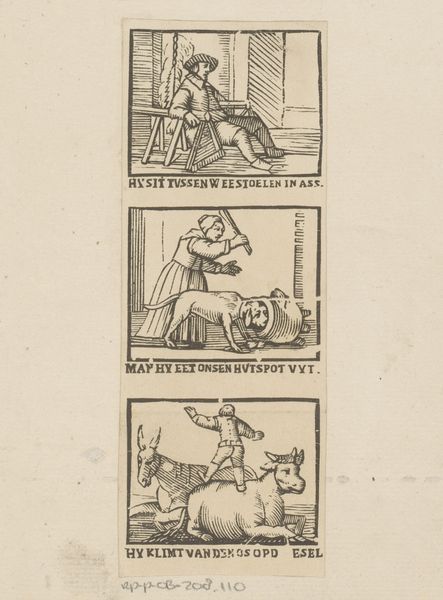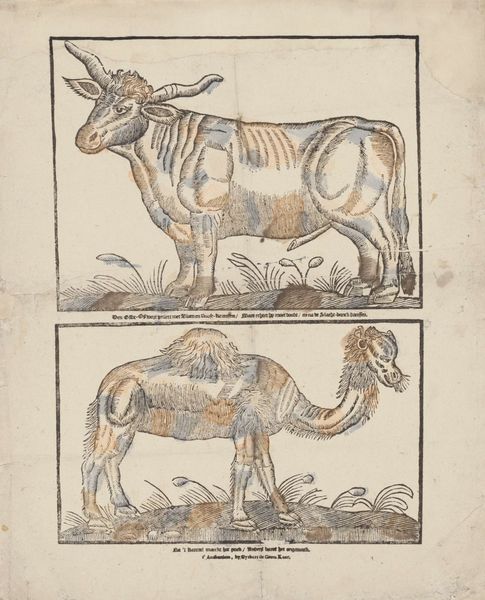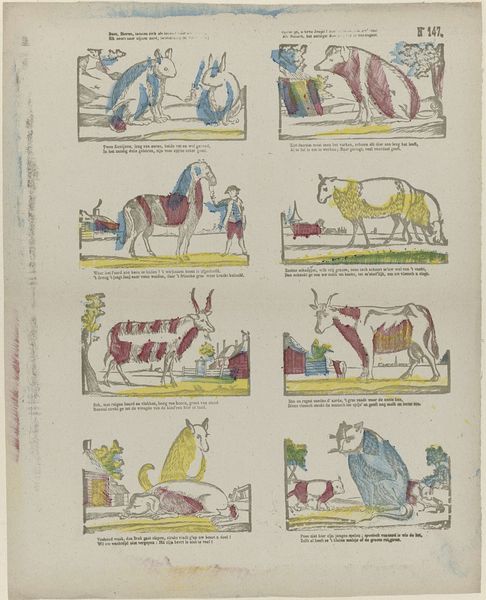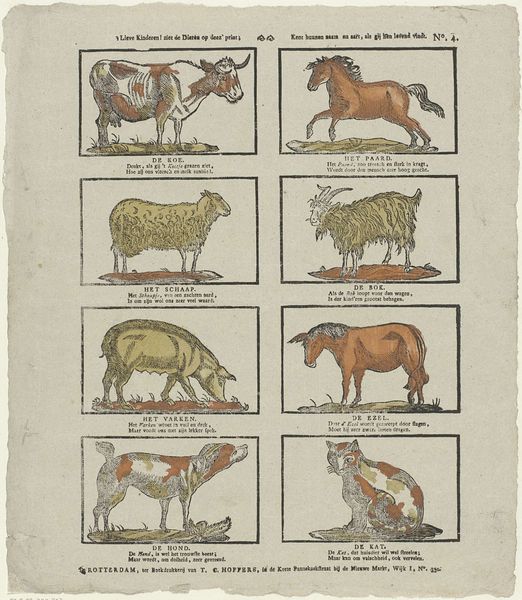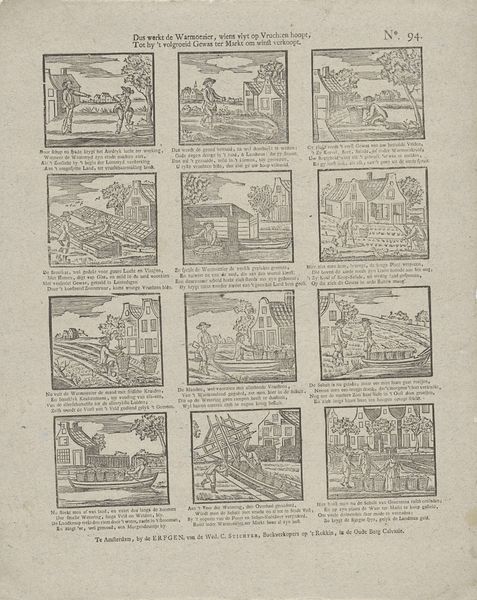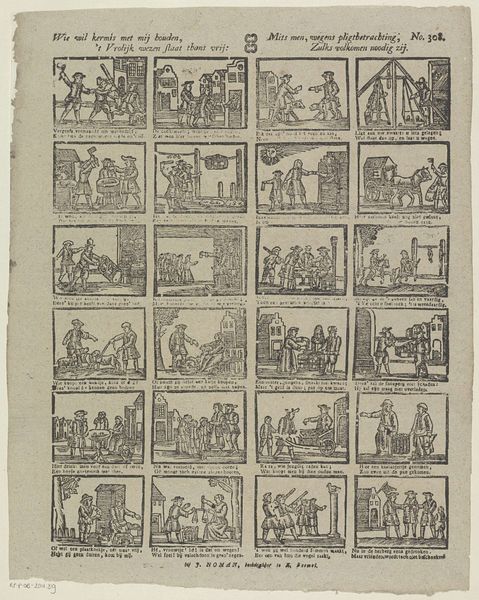
Hier ziet gy alles abondant / 't geen der is al op het Land 1725 - 1780
0:00
0:00
drawing, print, etching, paper, engraving
#
drawing
#
baroque
#
animal
#
dutch-golden-age
# print
#
etching
#
old engraving style
#
landscape
#
paper
#
horse
#
genre-painting
#
engraving
Dimensions: height 394 mm, width 285 mm
Copyright: Rijks Museum: Open Domain
Editor: Here we have an etching from sometime between 1725 and 1780, titled "Hier ziet gy alles abondant / 't geen der is al op het Land," created by Johannes Kannewet the Second. I'm immediately struck by the almost block-print quality to it, and the quaint depiction of rural life. What social context am I missing here? Curator: Well, seeing this print, I’m immediately drawn to its connection to Dutch Golden Age traditions, but through the lens of later print culture. The emphasis on genre scenes, the animals, the windmills, they all speak to an idealised vision of Dutch prosperity and identity. How do you think this relatively late date might impact its social role? Editor: Hmm, good question. It seems less revolutionary than the earlier Golden Age art; perhaps it’s now more about reaffirming established values, or maybe even clinging to a nostalgic past? Curator: Exactly! Consider the socio-political climate of the 18th century in the Netherlands. The Dutch Republic was in decline, facing increasing competition from other European powers. Images like these, reproduced and circulated widely, served to reinforce a sense of national pride and cultural heritage in the face of economic and political uncertainty. Think about where these images would have been found – were they in wealthy homes or common houses? Editor: It’s amazing how a simple-seeming print can reveal so much about the values and anxieties of a specific time. It makes me think differently about the public function of art. Curator: Indeed. This artwork highlights how images, beyond aesthetics, play an active role in shaping public perception and reinforcing cultural narratives within particular historical and social contexts. Thank you for sharing your insights; what will you explore next?
Comments
No comments
Be the first to comment and join the conversation on the ultimate creative platform.
